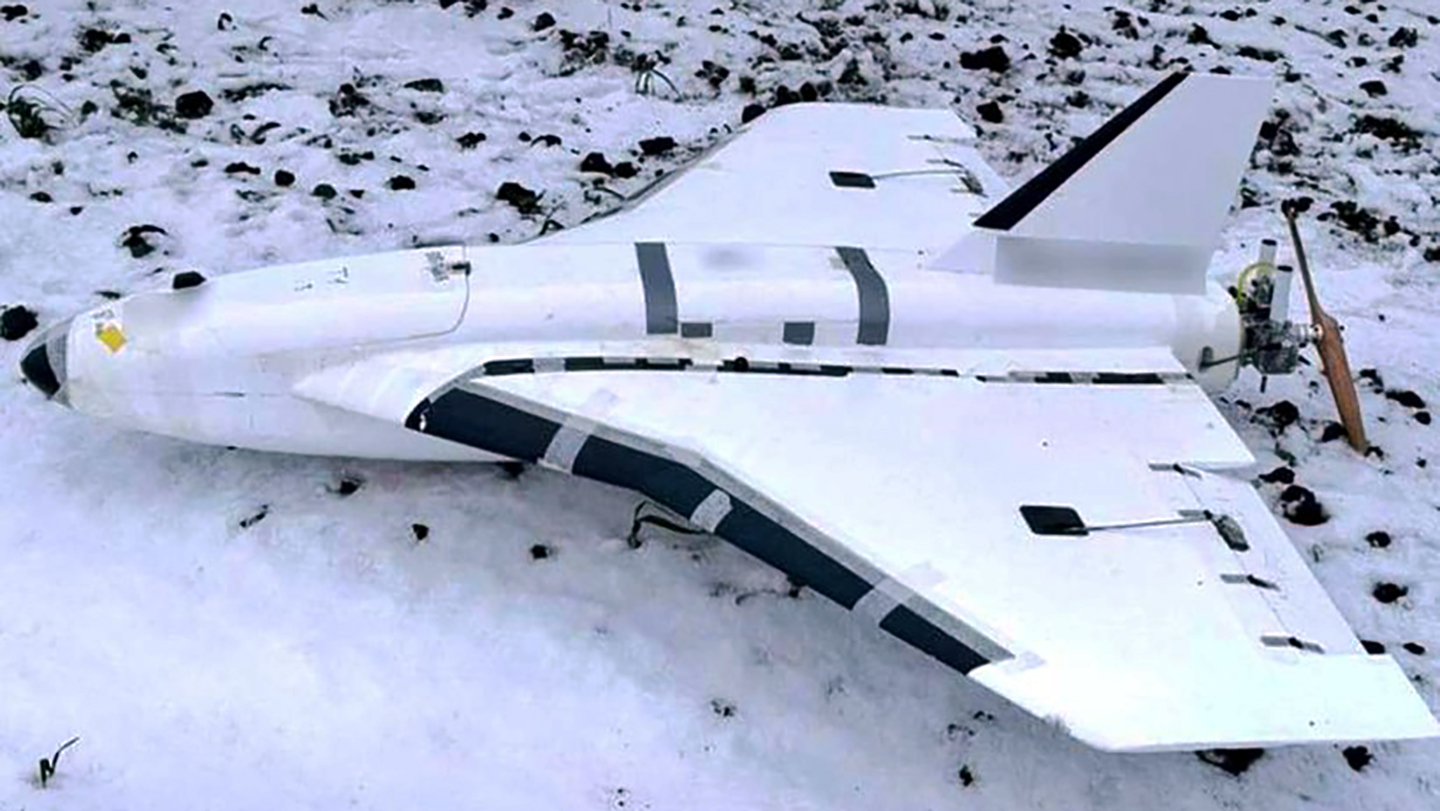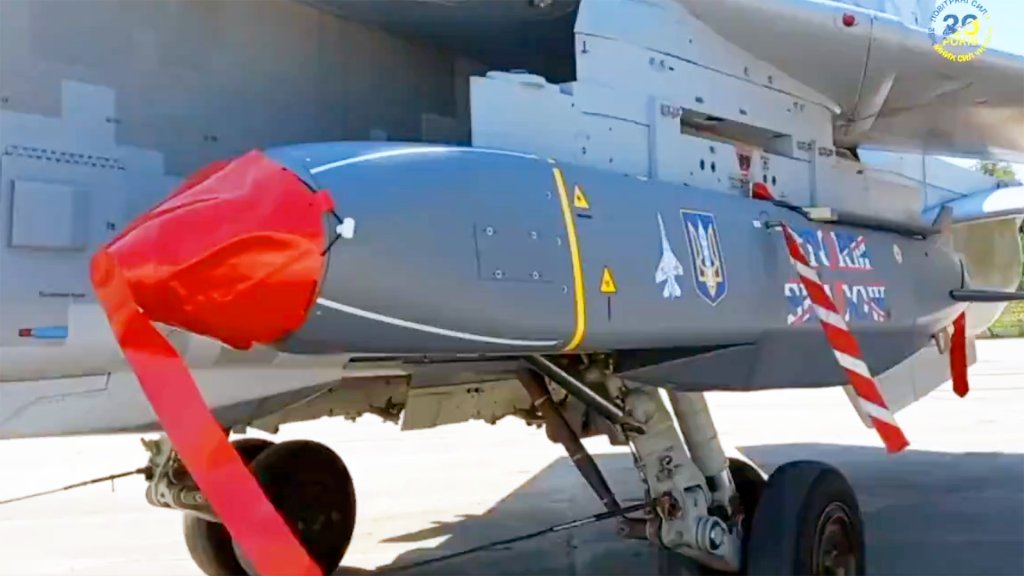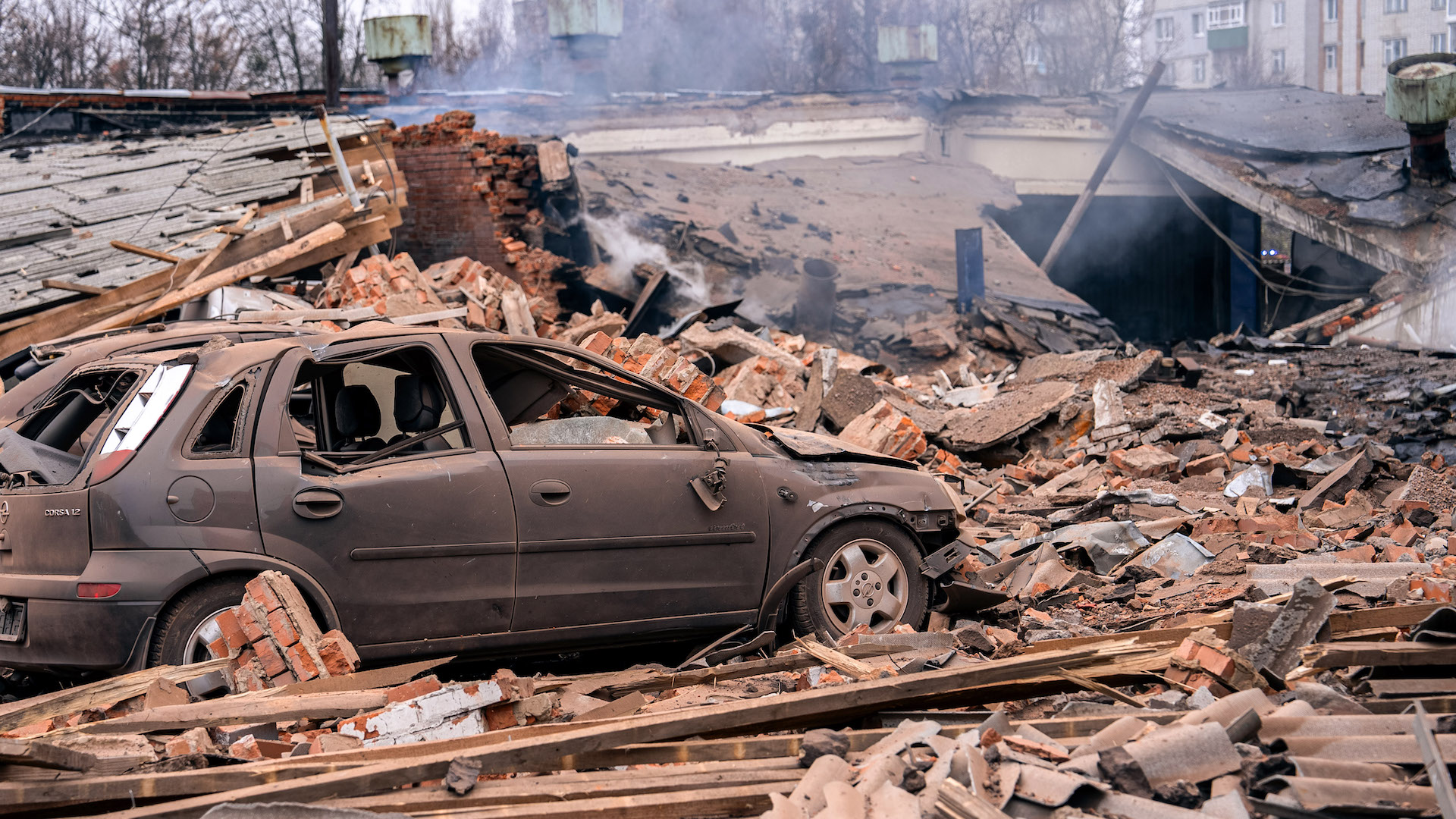Russia launched overnight what officials in Kyiv have described as the biggest drone raid on Ukrainian territory since the start of the conflict. Only hours later, Moscow said it was preparing “retaliatory actions” after Ukraine again used U.S.-donated Army Tactical Missile System (ATACMS) short-range ballistic missiles to strike targets within Russia’s borders.
You can read our initial report on the latest use of ATACMS to attack targets within Russia here.
Kremlin officials say that Ukraine has now used ATACMS to strike targets within Russia twice in the last three days. Russia claims that, on both occasions, Ukraine attempted to hit air defense systems in the Kursk region. While Russia says that one or two missiles reached their targets, most were shot down. Still, this was a rare admission by Moscow that Ukrainian strikes of any kind had successfully hit their targets.
The first of these targets appears to have been an S-400 long-range surface-to-air missile battery near the village of Bolshoe Zhirovo, on Nov. 23, while the second was the airfield at Khalino, also hosting air defense systems, which was struck yesterday morning. Khalino airfield is around 60 miles from the Ukrainian border, while Bolshoe Zhirovo is around 20 miles farther northwest. Satellite imagery of Khalino obtained by TWZ is inconclusive as to what damage was inflicted on the base.
Photos published on social media by unofficial Russian sources show the wreckage of one of the missiles in the aftermath of the ATACMS strike on Kursk-Khalino Air Base, as well as a Pantsir short-range air defense system in an elevated location in the background, as seen at the top of this article.
Before that, Ukraine had targeted an ammunition depot in the Bryansk region of southwestern Russia last week, in what was the first use of ATACMS within Russian borders.
It’s unclear what kind of retaliatory measures Russia now has in mind, but overnight it already subjected Ukraine to what appears to have been an unprecedented series of strikes involving long-range one-way attack drones.
According to the Ukrainian Air Force, the Russian strikes overnight involved 188 drones. Of these, the service claims its air defenses shot down 76, while it lost track of 96, which it claims was likely as a result of electronic warfare measures. Another five drones were noted headed toward Belarus, the Ukrainian Air Force said, presumably after guidance malfunctions.
“The enemy launched a record number of Shahed attack UAVs and unidentified drones,” the Ukrainian Air Force said.
Russia is now also making increasing use of long-range Gerbera drones, used as decoys during mass Shahed drone attacks, as you can read about here.

The results of the drone strikes included power outages across around 70 percent of the western region of Ternopil and damage to residential buildings in the Kyiv region, Ukrainian officials said.
“Unfortunately, there were hits to critical infrastructure facilities, and private and apartment buildings were damaged in several regions due to the massive drone attack,” the Ukrainian Air Force said, adding that no casualties had been reported.

The governor of the Ternopil region, Vyacheslav Nehoda, said that the attacks had “significantly affected” the power grid there and that this “will have an impact on the power supply of the entire region for a long time.”
The Ternopil region also saw disruption to water and heat supplies, with local authorities reportedly gearing up for planned power cuts.
In the Kyiv region, damage to four private residences, two high-rise apartment buildings, and other infrastructure was blamed on falling debris. Regional governor Ruslan Kravchenko said that local air defenses brought down more than 10 Russian drones.
An uptick in drone strikes across Ukraine — especially targeting energy infrastructure — was to be expected as the country gears up for winter. In the last two winters, Russia has also specifically launched attacks on critical infrastructure in an effort to cause maximum disruption and break Ukrainian resolve. Indeed, almost exactly a year ago, Russia launched what Ukrainian officials described at the time as the largest drone attack on their country so far, involving a reported 75 one-way attack drones. These were mainly launched against Kyiv and the surrounding region.
Last night saw most of Ukraine under air raid alert for several hours, according to the Air Force, and there are fears that this may just be the start of a more intense campaign of nighttime bombardment.
Thanks to its Iranian-designed one-way attack drones, Russia has a much cheaper means of keeping up a relentless assault on Ukrainian targets far beyond the front lines, compared to the ballistic missiles and cruise missiles that were used at the beginning of the campaign and then more sporadically as time passed. With the production of Shahed-type drones now also underway in Russia, there is also a more immediate source of these weapons.

This winter, the drone attacks also coincide with a major push by Russian forces along the front lines in eastern Ukraine. This has led to some of the most significant Russian territorial gains since the start of the full-scale invasion in 2022, as you can read about here. At the same time, Ukraine has also kept up the tempo of its own long-range drone strikes on Russian territory.
There’s also the backdrop of uncertainty around how the course of the war might change once Donald Trump takes office in January. The potential implications of this are something we have also examined in depth.
As for Ukraine’s ATACMS strikes, these were approved on targets deep within Russia earlier this month, primarily in support of the Kursk offensive, which is now facing a major Russian counterattack, which also involves North Korean troops.
As well as ATACMS, Ukraine has now received permission to use British-supplied Storm Shadow air-launched cruise missiles to strike targets deep in Russia. Permission to use the French-supplied SCALP EG, otherwise identical to the Storm Shadow, had previously been granted.

Today, Bloomberg reported that the United Kingdom had recently sent “dozens” more Storm Shadow missiles to Ukraine, although the U.K. Ministry of Defense has so far not commented on this.
While Russia’s President Vladimir Putin has made very clear his anger over these decisions from two of Ukraine’s Western allies, the Russian Ministry of Defense has so far only stated that “retaliatory actions are being prepared.”
It remains to be seen what form these will take, but Russia has already employed an experimental ballistic missile against the Ukrainian city of Dnipro last week, a response to the first use of ATACMS on Russian territory. You can read our initial analysis of this unprecedented event here, as well as our analysis of the intermediate-range ballistic missile of which a variant was likely used.
Putin has also previously declared that countries that provide Ukraine with long-range weapons used to strike targets within Russia are themselves now at risk of attack. Moscow has also warned that the use of Western-supplied long-range missiles by Ukraine against Russia could trigger a nuclear response after Russian nuclear war plans were updated.
Increasingly, however, there are signs that Russia and Ukraine might now be engaged in something of a new phase of the conflict, with tit-for-tat missile strikes across their respective territories, using longer-range and ever more capable weapons. However, with Trump less than two months from taking office, it remains to be seen just how much further this will escalate.
Contact the author: thomas@thewarzone.com
